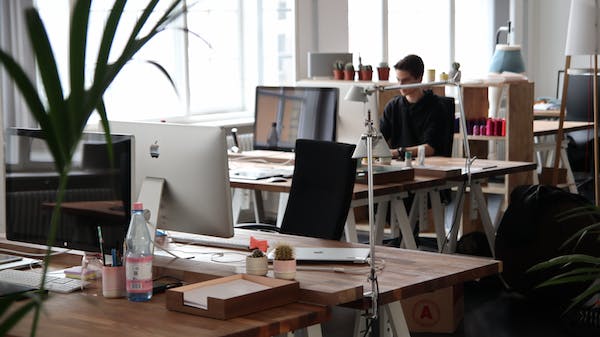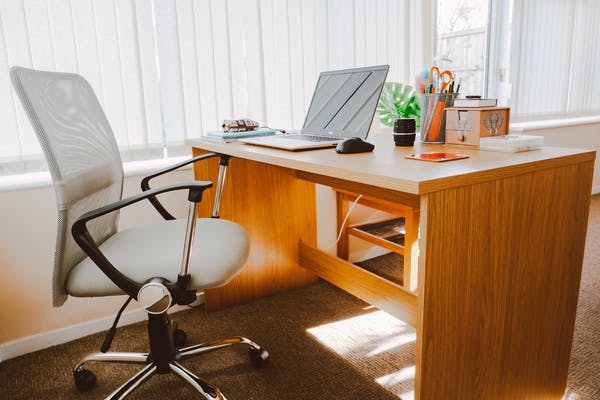The office space is more than just a physical environment where employees work. It plays a significant role in shaping the well-being and overall experience of employees. A well-designed and thoughtfully planned office space can have a profound impact on employee well-being, productivity, and job satisfaction. So, here’s how your office space impacts employee well-being, as well as a few key factors that contribute to creating a positive work environment, so start checking them out as soon as you can!
Natural light and biophilic design

Natural light has a direct impact on employee well-being and productivity. Studies have shown that exposure to natural light improves mood, reduces stress levels, and enhances sleep quality. Incorporating large windows, skylights, and open spaces that allow ample natural light to enter the office can significantly improve the well-being of employees. Additionally, incorporating biophilic design elements, such as indoor plants, natural materials, and views of nature, can create a calming and stimulating environment, further enhancing employee well-being.
Ergonomic design and comfortable workstations
Ergonomic design plays a crucial role in supporting employee well-being and physical health. Providing comfortable and adjustable workstations, ergonomic chairs, and proper desk setups can reduce the risk of musculoskeletal disorders and promote good posture. Creating a workspace that supports employee comfort and reduces physical strain can contribute to improved well-being and productivity.
Noise control and acoustic design

Noise levels in the office can significantly impact employee well-being and concentration. Excessive noise, such as loud conversations, phone rings, or noisy equipment, can lead to stress, decreased productivity, and increased errors. Implementing acoustic design measures, such as sound-absorbing materials, acoustic screens, and quiet zones, can help control noise levels and create a more conducive and peaceful work environment, fostering employee well-being.
Collaborative spaces and social interaction
The office layout and design should encourage collaboration and social interaction among employees. Providing dedicated spaces for team meetings, brainstorming sessions, and informal gatherings can foster teamwork, creativity, and a sense of belonging. Employees who have opportunities for social interaction and collaboration are more likely to feel engaged, motivated, and connected to their colleagues, positively impacting their overall well-being.
Accessible amenities and breakout areas

Well-being in the office extends beyond workstations. Providing accessible amenities, such as well-stocked kitchenettes, comfortable breakout areas, and relaxation spaces, allows employees to recharge and take regular breaks. These areas offer opportunities for relaxation, socialization, and stress relief, contributing to improved mental well-being and overall job satisfaction.
Well-designed facilities for health and wellness
Supporting employee well-being involves providing facilities for health and wellness activities. Including amenities such as fitness centers, meditation or quiet rooms, and wellness programs can encourage employees to prioritize their physical and mental health. These facilities promote a healthy work-life balance, reduce stress, and foster a positive work environment. This also goes for comfortable toilet areas as well, so make sure you call an experienced plumbing specialist who will make your toilets a bit bigger, nicer, and more comfortable than before. This might not sound like a lot at first, but you’ll soon notice that everyone’s feeling better now that they have more maneuvering space.
Thoughtful color and lighting choices
Color and lighting can significantly influence mood and productivity. Choosing a color palette that promotes a positive atmosphere and aligns with the company’s brand and culture can enhance employee well-being. Similarly, implementing proper lighting design, including task lighting and ambient lighting, helps reduce eye strain, supports focus, and creates a pleasant work environment.
Personalization and flexibility

Allowing employees to personalize their workspaces and providing flexibility in office design can positively impact well-being. Giving employees the freedom to customize their desks or work areas according to their preferences and providing options for flexible work arrangements, such as standing desks or alternative seating options, demonstrates trust and empowers employees to create a workspace that supports their well-being and productivity.
Your office space plays a vital role in shaping the well-being of employees. By considering factors such as natural light, ergonomic design, noise control, collaborative spaces, accessible amenities, thoughtful color and lighting choices, well-designed facilities for health and wellness, and personalization, employers can create an environment that fosters employee well-being, productivity, and job satisfaction. Investing in the design and layout of the office space demonstrates a commitment to employee welfare, ultimately leading to a happier, healthier, and more engaged workforce.

